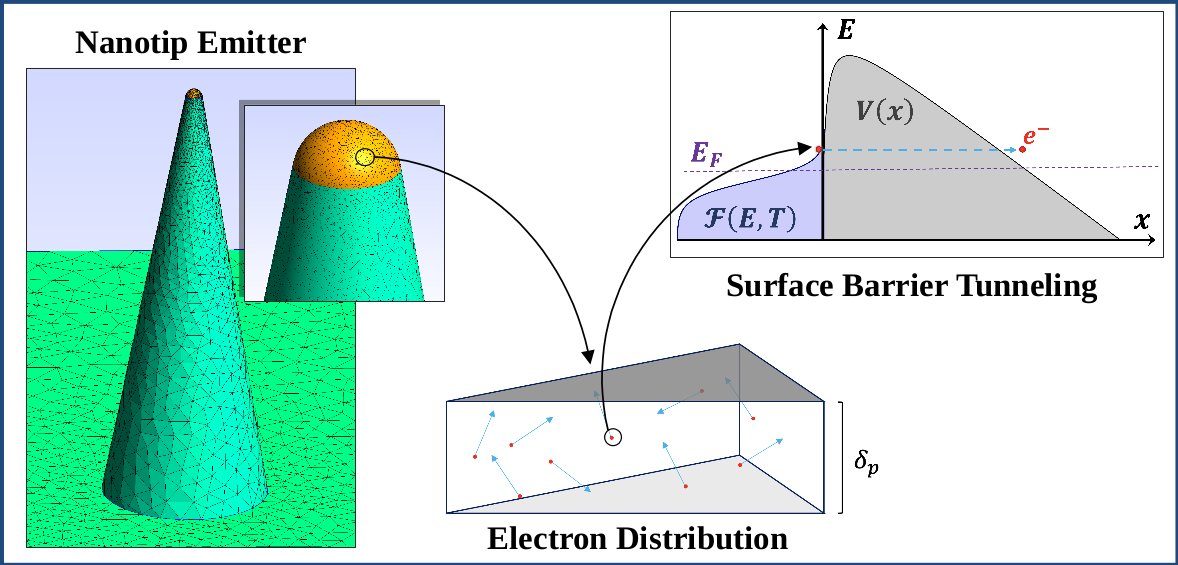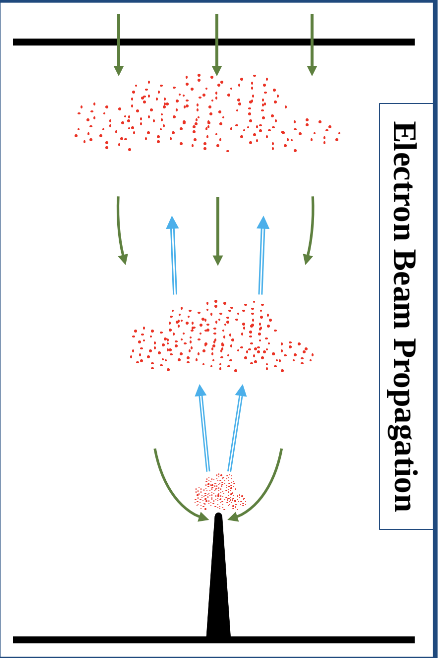- Center for Research Computing Data
- Prospective Users
- Supported Research
- High Precision Modeling of Ultracold Electron Sources
High Precision Modeling of Ultracold Electron Sources
Principal Investigator: Bela Erdelyi, Ph.D., Department of Physics.
An ultracold electron source for accelerator applications would represent a significant improvement in the quality of the electron beam. High quality electron beams would greatly improve the resolution of microscopy, allowing for the observation of chemical and biological processes that once were impossible to study directly. Additionally, improvements in electron beam quality would lead to advances everywhere accelerators are used; both for research and in industrial applications. A precise understanding of the physical mechanisms involved is crucial to designing higher quality sources, however, many physical effects are at work which makes the ultracold regime very challenging to model.
We are developing tools to address many of these challenges. The wide variety in length scales (1 nm to 100 μm) of the electron source geometry (an array of nanotips) and the wide variety in relevant time scales (close collisions to propagation away from the source) make this a very inefficient computational problem. Even small nanotip arrays require 10 – 100 thousand mesh elements to accurately describe the boundary, leading to very large-scale problems.
We have developed novel methods to address each of these points efficiently, but in a way that preserves the details accurately. These procedures are parallelized to take advantage of the structure available in the Gaea cluster. Gaea makes possible the calculation of the electromagnetic fields due to charged particles in highly curved structures and the simulation of beam dynamics while accurately preserving the discrete particle nature of the beam, even for millions of particles. This particle-particle treatment is critically important for high-fidelity simulations involving ultracold beams. All of the code developed in our group is available for download with documentation and examples from the Beam Physics Code Repository.
Prospective user?


-
For Prospective Users
-
Resources
-
Supported Research
- Critical Current by Design
- Image Reconstruction Software Using Proton Computed Tomography (pCT)
- Advanced-Accelerator Concepts
- Orphan Gene Project
- Computational Materials Science and Mechanics (CMSM) Group
- Vortex Pinning in Thin Superconducting Films and Strips
- High-Throughput Analysis of High-Content Biological Images
- High Precision Modeling of Ultracold Electron Sources
- Collisional Simulation Methods for Charged Particle Beam Dynamics and Applications
-
Getting Access
-
HPC Policies
-
Resources
- Resource Monitors